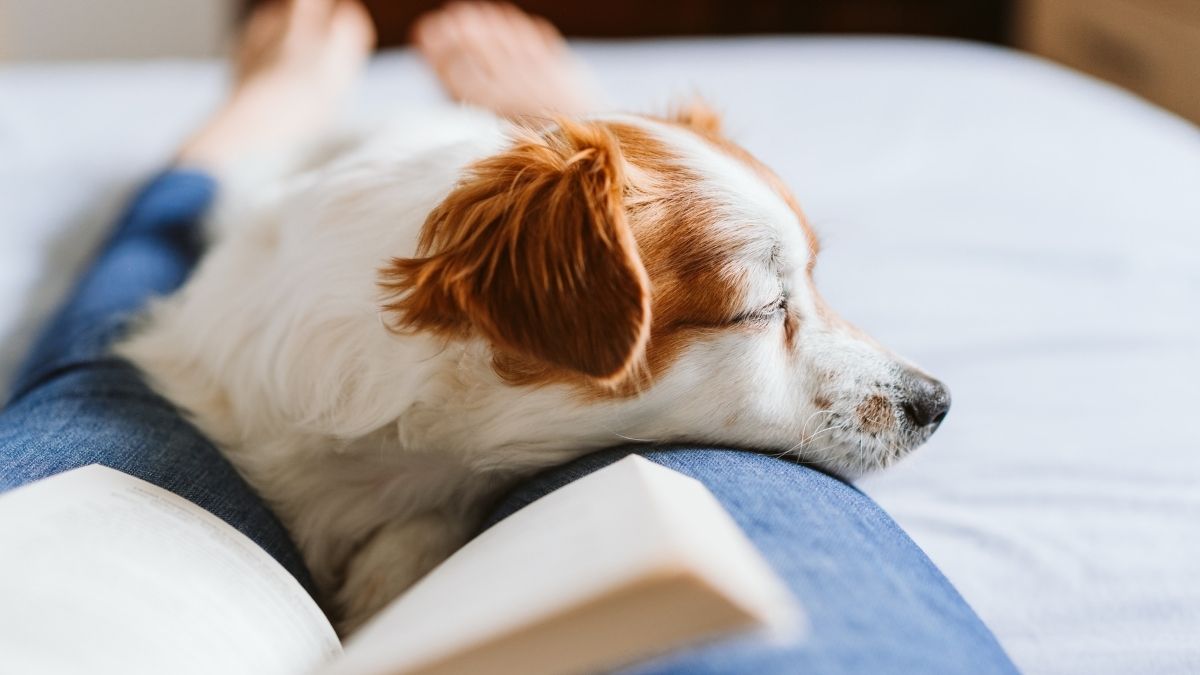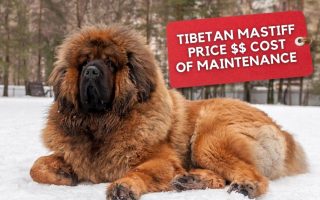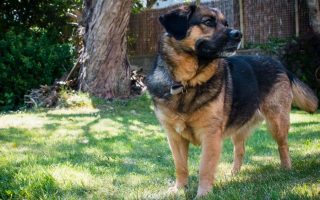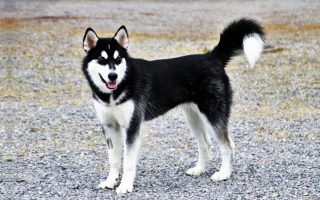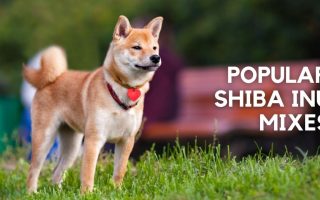We all love loyal dogs, and this is why we refer to canines as man’s best friend.
Having said that, there are varying degrees of loyalty. Some dogs are loyal but don’t mind being on their own.
Others become your shadow, and you just have to get used to having them around you always.
Dogs under the second category are tagged velcro dog breeds, and for some pet parents, this quality is the winning ticket.
Those who would prefer not to be alone would appreciate having that constant canine companionship.
For some other pet parents, having clingy dogs might be overwhelming. They prefer dogs with some independence, especially if they have a busy life and can’t always give the pet sufficient attention.
There’s no right or wrong when it comes to velcro dogs, and it all falls to preference.
This article will cover all aspects of this subject, including an explanation, advantages, and disadvantages.
You would also get a list of 20 really clingy velcro dog breeds that you could either like or better avoid.
What Is A Velcro Dog Syndrome?
The word ‘velcro’ refers to a popular brand of fastening tape, and when the term is applied to a dog, it defines clingy behavior.
Velcro dogs love to stick close to their humans at all times, and we mean all times.
When cooking, going into the bathroom, catching the evening news, or getting a nap, a velcro dog will want to partake in all activities.
Understand that there’s a difference between a velcro dog and a dog suffering from separation anxiety.
All clingy dogs can have issues with separation anxiety, but not all dogs suffering from the latter can be termed velcro.
A dog suffering from separation anxiety will display undesirable behaviors when you’re not around, but may not necessarily stay too close to you when you’re home. A velcro pup, however, can’t get enough of you.
Experts have suggested that velcro behavior can either be instinctive or learned.
Some breeds are more likely to be velcro than others, but some factors can make this happen faster.
The American Kennel Club puts it this way “Why does my dog follow me everywhere? The answer has to do with your dog’s animal instinct, pack mentality, and a few other variables.”
They go further to explain that many dogs have a pack instinct, which means staying close to other pack members. In modern times you and your family are considered pack members.
Too many positive reinforcements can also encourage this behavior. If you reward your dog for the attention you get, it will come closer till it becomes a shadow.
Puppies also have a higher tendency to cling to you, especially if you’re the one who feeds and cares for them.
How Do You Know If Your Dog Is A Clingy Dog?
What are the signs that your pup is a velcro dog and not merely one suffering from separation anxiety?
These signs vary between breeds and individual dogs, but generally, you will discover these to be true about your super clingy dog:
- They always want to be close to their owners.
- They will be around you every time.
- They might whine if not close to you.
- They know when you’re about to get up from the chair.
- They might want to perch on your laps or lie close to your leg.
Dogs bred to be companions often have clingy behavior, but it is not limited to them alone. Some hunting dogs can also display these traits, as well as dogs that worked in packs.
Dogs that suffered abandonment in rescue shelters may also become clingy with their new owners, and those that weren’t well socialized.
We’ll touch on the topic of handling velcro behavior, but let’s first look into 20 breeds that are predisposed to this behavior.
Top 20 Velcro Dog Breeds That Are Extra Clingy And Loyal
1. French Bulldog
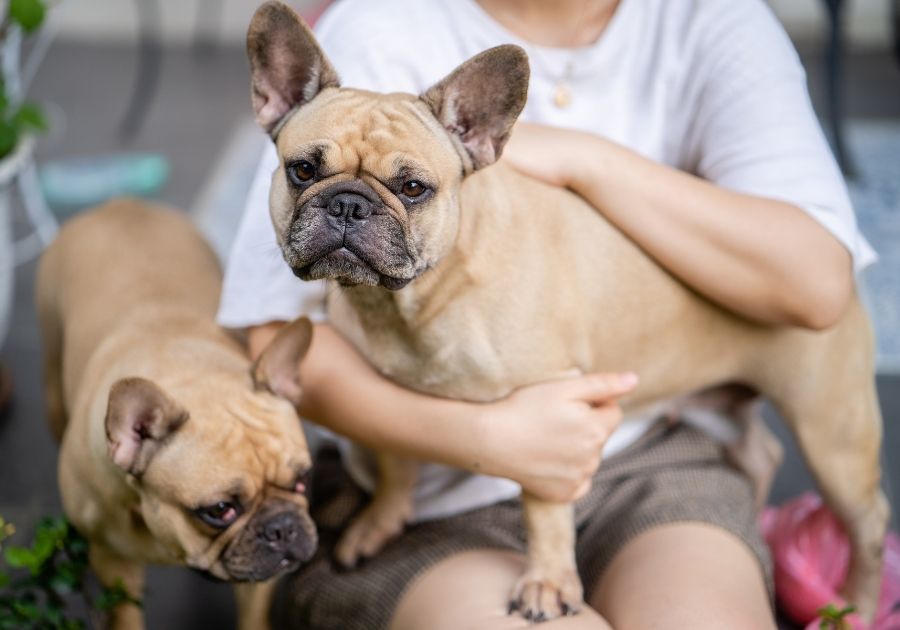
Breed Information
- AKC Group: Non-Sporting Group
- Height: 11 to 12 inches
- Weight: 16 to 28 pounds
- Temperament: Playful, easygoing, bright
- Life expectancy: 11 to 14 years
- Origin: England
- Good for Novice Owners: Yes
The French Bulldog was bred to be the smaller size of the Bulldog and started as a companion from the onset.
As such, it isn’t surprising that it would want to stick close to you. According to stats, a lot of Americans don’t seem to mind.
The French Bulldog is currently the second most popular dog breed in the United States.
Frenchie, as it is popularly called, has an easygoing and laid-back personality. It is good for those who don’t want the stress of a highly energetic dog but are not too lazy as to bore you out.
Frenchies love to play just as much as they enjoy cuddling up to their owners, and they make excellent family dogs.
2. Great Dane
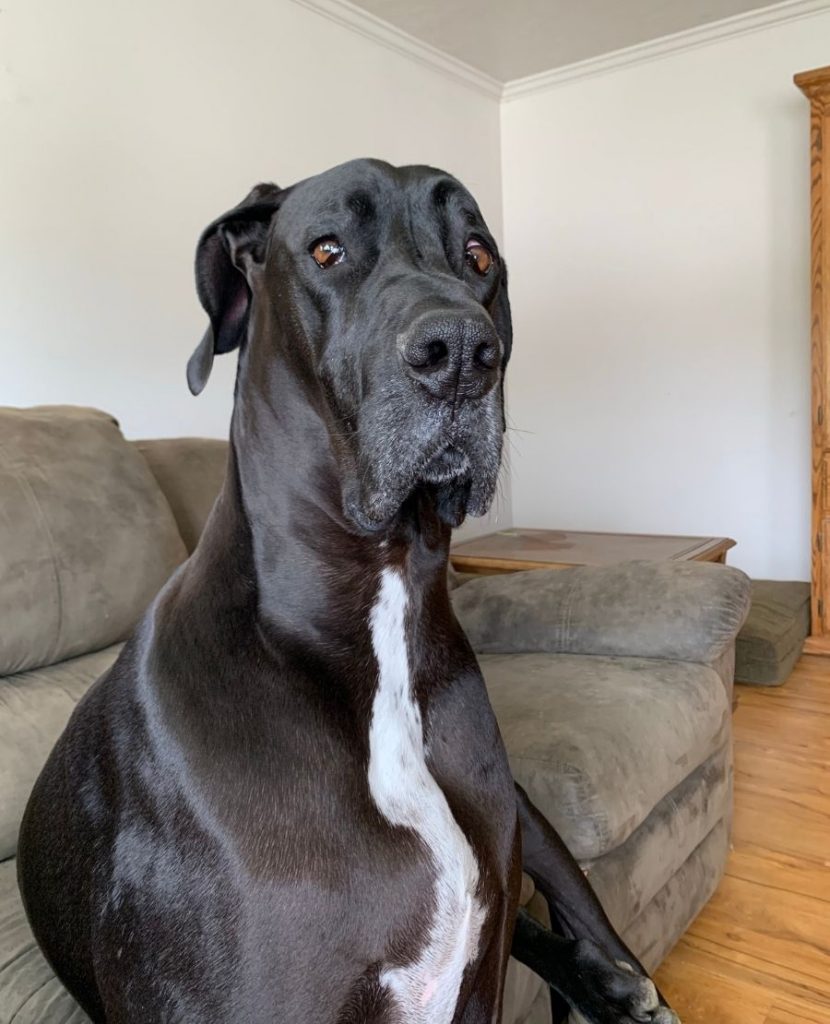
Breed Information
- AKC Group: Working Group
- Height: 26 to 34 inches
- Weight: 100 to 200 pounds
- Temperament: Patient, dependable, gentle
- Life expectancy: 7 to 10 years
- Origin: German
- Good for Novice Owners: No
One would expect a giant breed like the Great Dane to be independent and self-sufficient. But in reality, it seems the Great Dane would have rather preferred to be a small lapdog.
Judging from the number of times it might try to climb on your lap, this assertion could be true.
The Great Dane looks intimidating and isn’t good for new pet parents because of its size, but it is a gentle dog breed.
Known as the Apollo of dogs, the Great Dane is relaxed and patient with people, including strangers. It is also kid-friendly and can tolerate rough play from children.
The Great Dane enjoys human company and will want to be around you all the time.
3. Coton de Tuléar
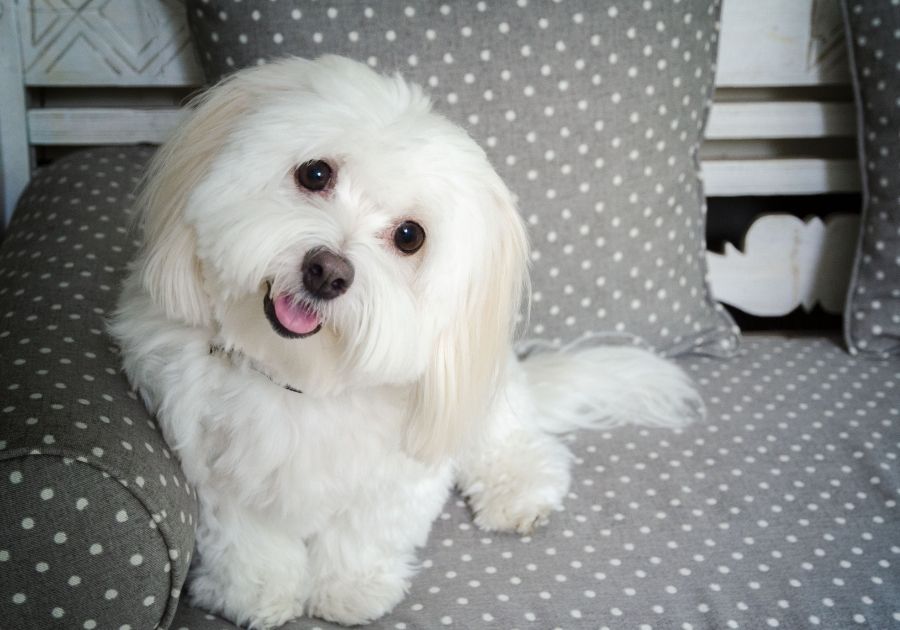
Breed Information
- AKC Group: Non-Sporting Group
- Height: 8 to 12 inches
- Weight: 8 to 13 pounds
- Temperament: Affectionate, playful, lovely
- Life expectancy: 14 to 16 years
- Origin: Madagascar
- Good for Novice Owners: Yes
This African white-coated breed was a companion for ladies, the royal class, and everyday folks in Madagascar before it moved to France and North America.
Coton de Tuléar is used to being around company, and so it has instinctive reasons to be a Velcro dog.
It’s all good, though, as they are not too heavy and can be taken around. If you do work at an office with a strict no pets policy, owning a Coton de Tulear can be challenging.
This breed is best for retired seniors, stay-at-home parents, or remote job worker.
4. Giant Schnauzer
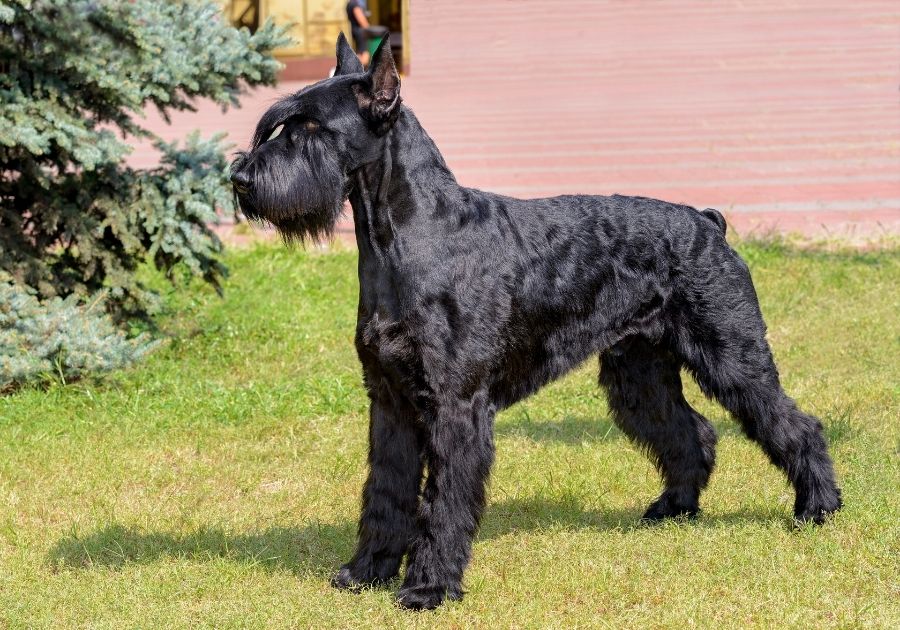
Breed Information
- AKC Group: Working Group
- Height: 23 to 27 inches
- Weight: 55 to 80 pounds
- Temperament: Intelligent, powerful, loyal
- Life expectancy: 10 to 12 years
- Origin: Germany
- Good for Novice Owners: No
The Giant Schnauzer should not be classed under the same breed as the Miniature Schnauzer or even the Standard Schnauzer.
They are three different breeds, and the Giant Schnauzer is the biggest of them all.
Like the Great Dane, this breed doesn’t seem to realize its size as it behaves like a lapdog.
The Giant Schnauzer is also territorial, a quality that made (and still makes) it a good watchdog and guard.
It would want to be by your side and may not be too keen on socializing with others.
Because of its size, energy, high intelligence, and dominant streak, the Giant Schnauzer is best suited for an experienced owner.
5. Basset Hound
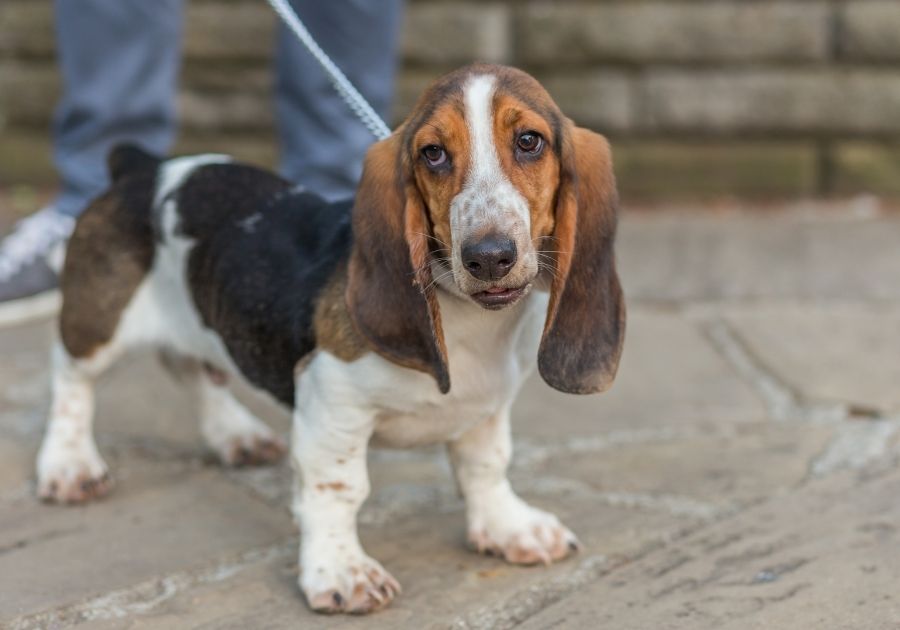
Breed Information
- AKC Group: Hound Group
- Height: 12 to 14 inches
- Weight: 50 to 65 pounds
- Temperament: Friendly, easygoing,
- Life expectancy: 10 to 12 years
- Origin: Britain
- Good for Novice Owners: Yes
The Basset Hound was bred to be a hunter and has a strong sense of smell, as well as the ability to stick close to its owner while hunting.
It retained this habit in our modern times, making it join the ranks of clingy dog breeds. The Basset Hound will enjoy lying close to you or accompanying you on an evening stroll.
Basset Hounds get along with everyone and are generally cooperative. This breed is kid and pet friendly, although its hunting instinct can be a problem with rodents.
It is also low energetic which makes it suitable for new pet parents. However, you should know that Basset Hounds have an independent mind. They need firm training.
6. Shar-Pei
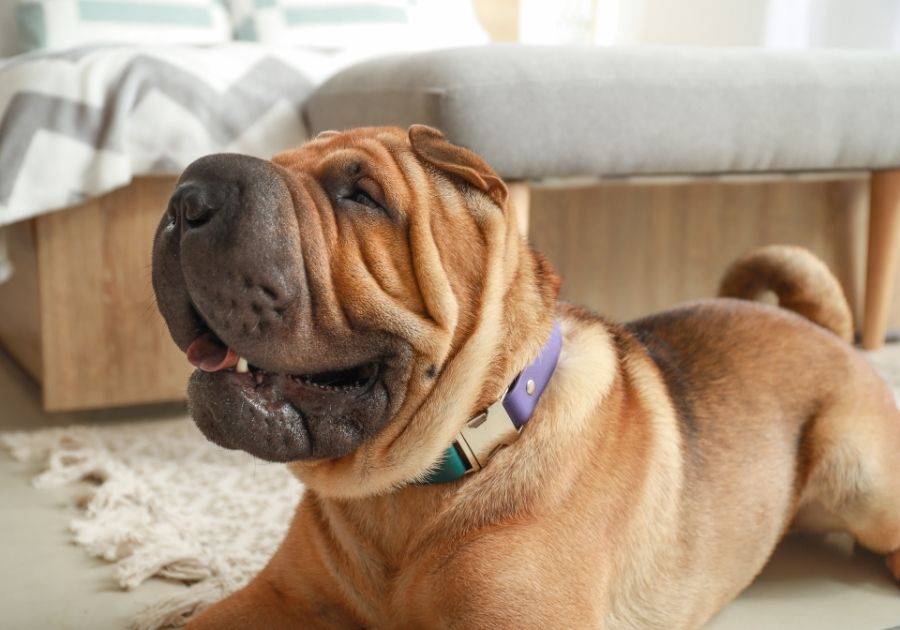
Breed Information
- AKC Group: Non-Sporting Group
- Height: 18 to 20 inches
- Weight: 40 to 55 pounds
- Temperament: Alert, independent, aloof
- Life expectancy: 8 to 12 years
- Origin: China
- Good for Novice Owners: No
Fully known as the Chinese Shar-Pei, this breed has a unique look. Its wrinkly folds and fur draw the attention of people, and its personality makes them stay.
The Shar-Pei was bred to be a versatile worker as it hunted, herded, and guarded. These jobs required it to be both independent and loyal, both of which it portrays.
The Shar-Pei enjoys the company of its owner and the immediate family but tends to be aloof towards strangers.
It can be protective and devoted but needs firm training as it is stubborn too.
7. Cocker Spaniel
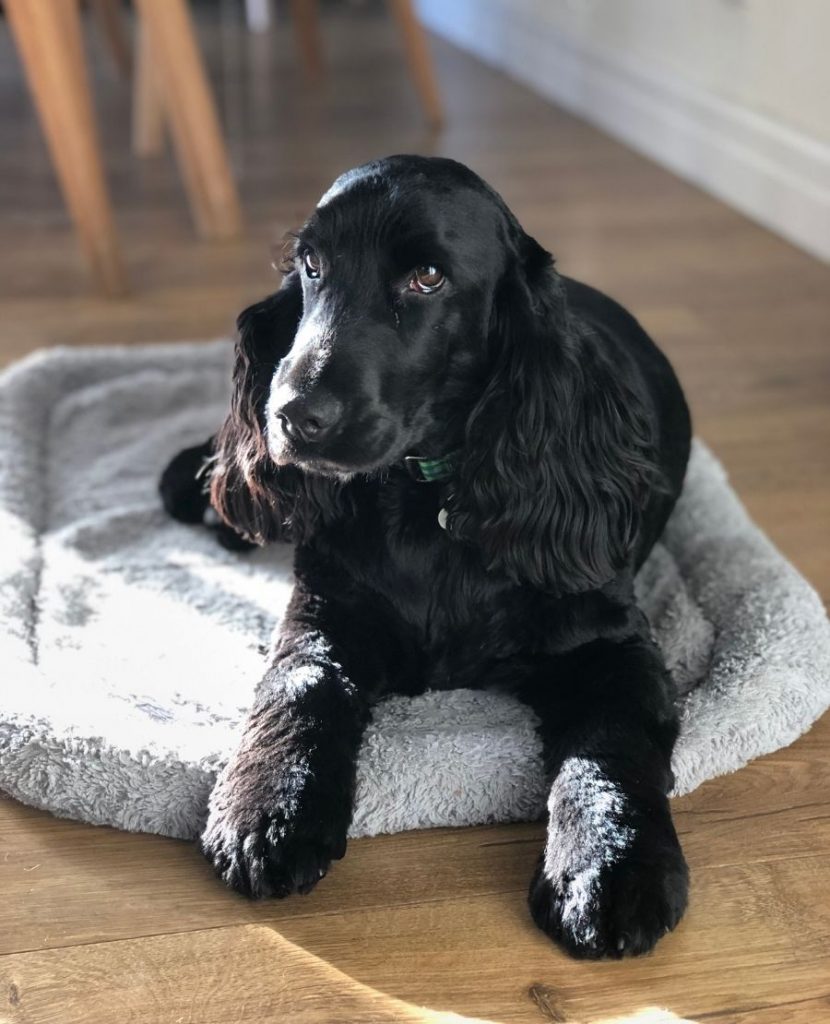
Breed Information
- AKC Group: Sporting Group
- Height: 14 to 15 inches
- Weight: 24 to 28 pounds
- Temperament: Playful, Affectionate, quiet
- Life expectancy: 12 to 15 years
- Origin: England
- Good for Novice Owners: Yes
The Cocker Spaniel was bred to be a bird hunter but is now a companion for its many fans. It is highly popular, and few can resist its cute looks.
This breed also loves a lot of attention and will react to loneliness in undesirable ways. Cocker Spaniels love human company.
In personality, few breeds can compete with the Cocker Spaniel in terms of sweetness. This breed is affectionate, playful, and always up for a cuddle.
It is also sensitive and soft, so harsh treatment is a definite no. The Cocker Spaniel will only thrive in a gentle environment with enough care.
8. Whippet
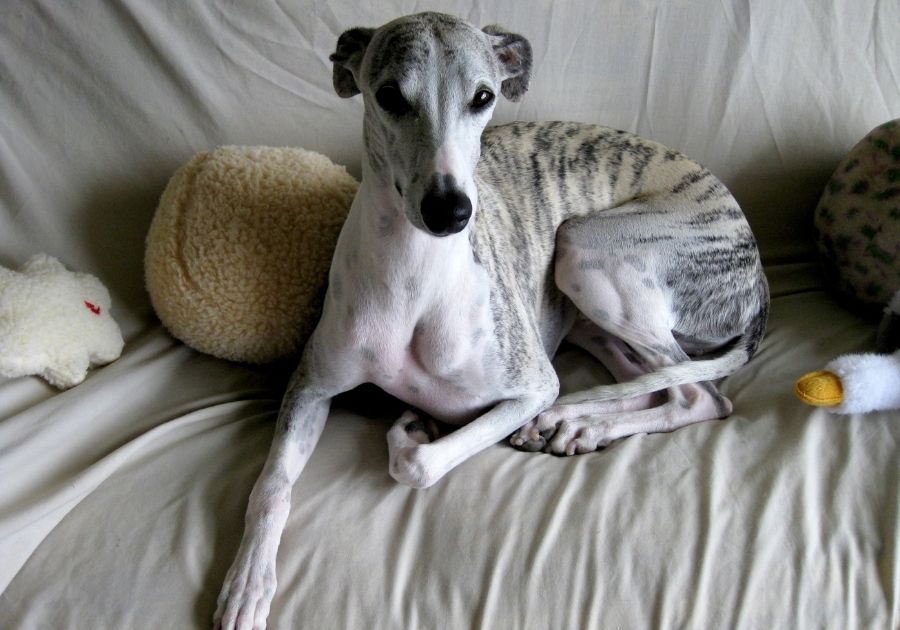
Breed Information
- AKC Group: Hound Group
- Height: 18 to 22 inches
- Weight: 18 to 48 pounds
- Temperament: Quiet, affectionate, friendly
- Life expectancy: 12 to 15 years
- Origin: England
- Good for Novice Owners: Yes
The Whippet was bred to hunt rabbits and closely resembles the Greyhound so much that people nicknamed it the “poor man Greyhound”.
The Whippet isn’t a small Greyhound, though it was fashioned from the Greyhound, and possesses the same speed.
Whippets and Greyhounds are also known to be very clingy dogs, a relic from their hunting days when they moved close to their owners.
Unlike some other velcro hounds, however, the Whippet has a little independence and can be on its own for some time.
9. Cavalier King Charles Spaniel
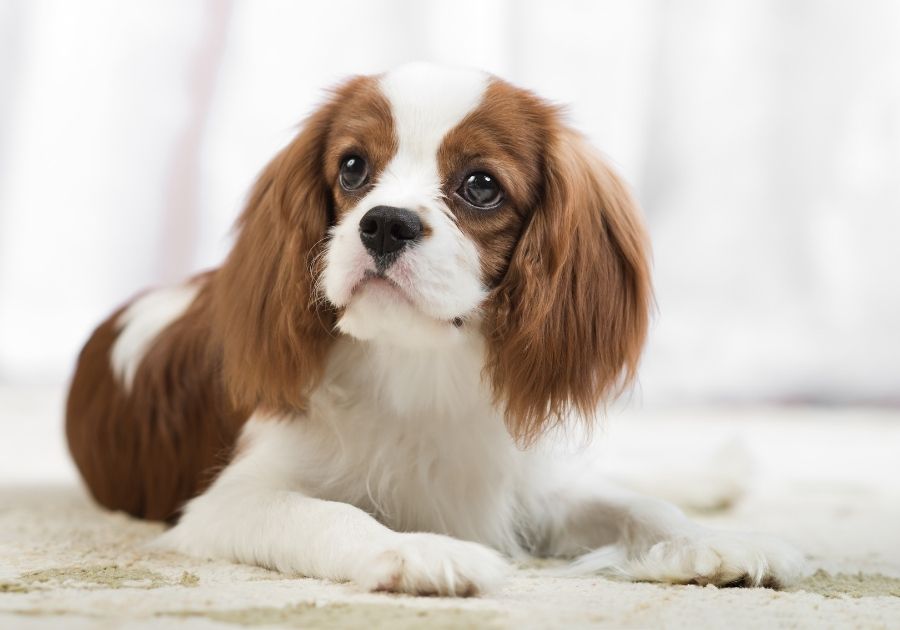
Breed Information
- AKC Group: Toy Group
- Height: 12 to 13 inches
- Weight: 13 to 18 pounds
- Temperament: Playful, affectionate, fearless
- Life expectancy: 9 to 15 years
- Origin: United Kingdom
- Good for Novice Owners: Yes
The Cavalier King Charles Spaniel is a small dog with tons of beauty and a touch of royalty. It was named after King Charles II and was bred with the Toy Spaniel in mind.
This breed loves being around its owner and is a gentle lapdog. It is also cute, and some might say too cute. One can easily get carried away and spoil this breed.
Another lovely quality about the Cavalier King Charles Spaniel is its acceptance of everyone.
This breed loves humans, and your visitors don’t have to be on edge as it would melt their hearts with its eyes.
That said, train it not to be too enthusiastic with people. That can become a problem.
10. Poodle
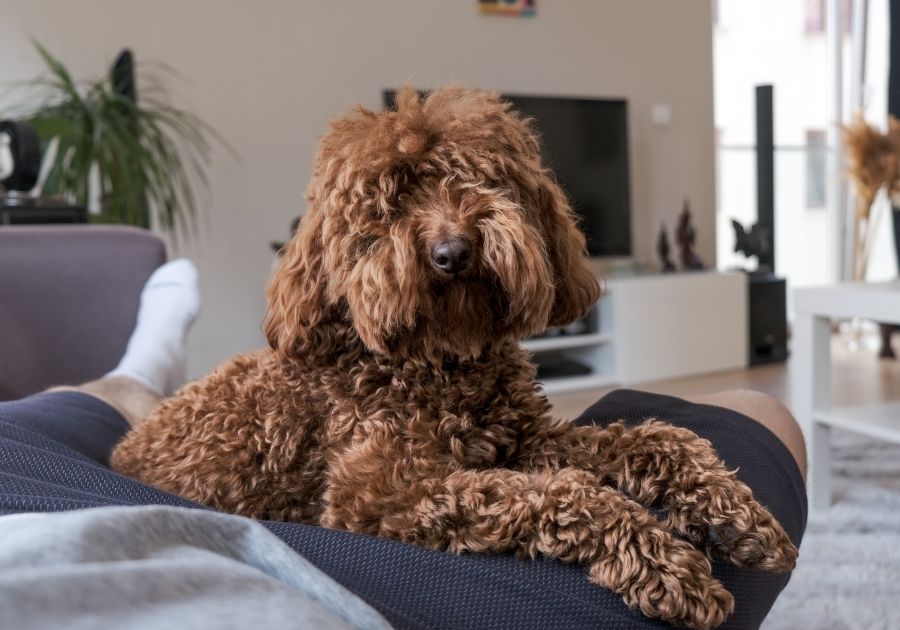
Breed Information
- AKC Group: Non-Sporting Group
- Height: 10 to 22 inches
- Weight: 6 to 70 pounds
- Temperament: Intelligent, active, alert
- Life expectancy: 12 to 15 years
- Origin: Germany, France
- Good for Novice Owners: Yes
Poodles have a lot of things going for them. They rank second among the most intelligent dog breeds, are highly popular, and are also easily recognizable, especially for the fanciful haircut.
Poodles do not ‘cling’ to everyone in the family, but tend to have a favorite.
They come in three sizes: toy, mini, and standard. Each size was bred with a specific role in mind, but they all share the same temperaments and looks.
Poodles are notably one of the best non-shedding dogs out there and are also considered hypoallergenic, making them suitable for allergy sufferers.
11. Australian Shepherd
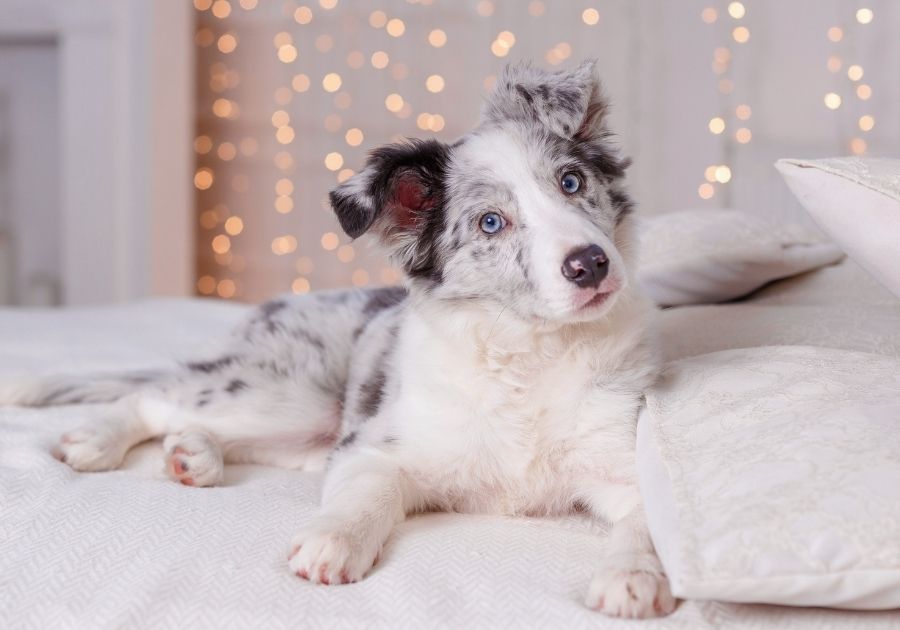
Breed Information
- AKC Group: Herding Group
- Height: 18 to 23 inches
- Weight: 40 to 65 pounds
- Temperament: Intelligent, affectionate, good-natured
- Life expectancy: 12 to 15 years
- Origin: United States
- Good for Novice Owners: No
Australian Shepherds started as herding dogs, so they supposedly should be very independent.
But while they do have their way of doing things, a typical Australian Shepherd is very devoted to its family.
This devotion sits side by side with a general mistrust of strangers.
Good socialization can help reduce this tendency, but the Australian Shepherd will not become overly friendly with those it doesn’t know.
It also thrives better with an active owner as it loves having work to do. Many people don’t own sheep, but the Australian Shepherd can be taught to do other things.
12. Yorkshire Terrier
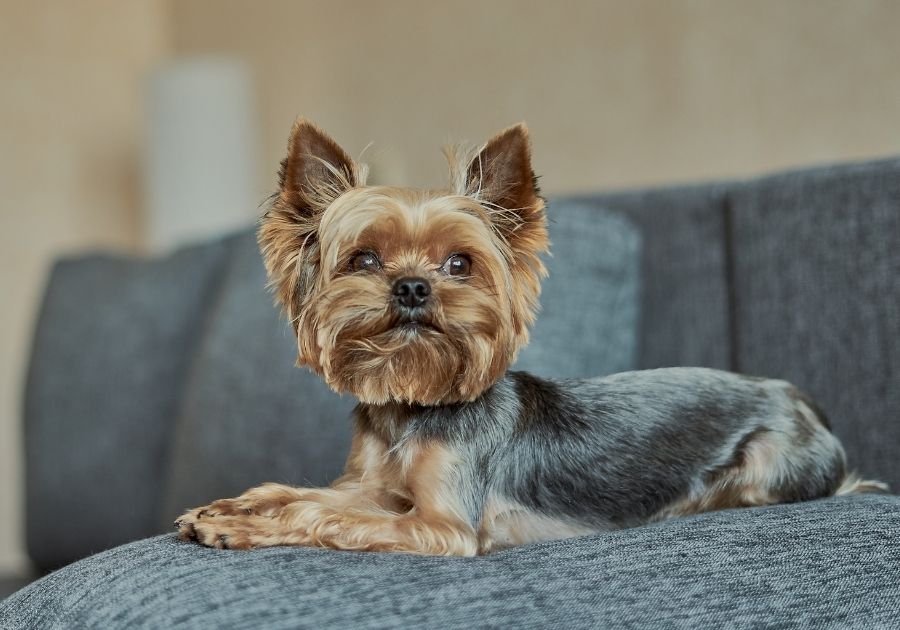
Breed Information
- AKC Group: Toy Group
- Height: 8 to 9 inches
- Weight: 4 to 6 pounds
- Temperament: Intelligent, bold, independent
- Life expectancy: 12 to 15 years
- Origin: England
- Good for Novice Owners: Yes
Also nicknamed Yorkie, the Yorkshire Terrier is one of the spunkiest toy dog breeds you’d find.
Though the American Kennel Club didn’t classify it under the terrier group because of its size, the Yorkshire Terrier does has the spirit of a Terrier.
In the Victorian Era, Yorkie would often be found perched in the handbag of Victorian ladies. As such, it has no idea how to be without human company.
Fortunately, it is small enough to carry around while you go shopping or even on a journey.
13. Vizsla
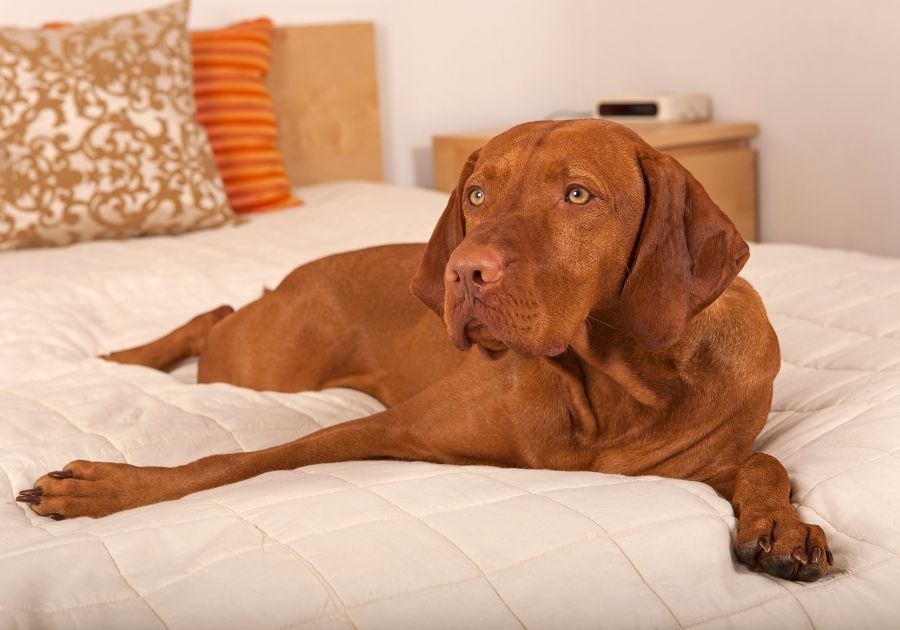
Breed Information
- AKC Group: Sporting Group
- Height: 21 to 24 inches
- Weight: 45 to 65 pounds
- Temperament: Affectionate, energetic, loyal
- Life expectancy: 10 to 14 years
- Origin: Hungary
- Good for Novice Owners: Yes
The Vizsla is so clingy, that it earned itself the nickname “Velcro Vizsla”.
This breed was a pointer and a retriever in its early days, so it hardly strayed from its owner on hunting expeditions.
Since then, Vizsla remains highly attached to its owner. It isn’t a lazy dog, though. Don’t assume a Vizsla would be a couch potato or you will be disappointed.
This breed is active and requires enough exercise. It does well with an active owner who can cuddle as well as a jog. Vizslas also enjoy swimming and hiking.
14. Labrador Retriever
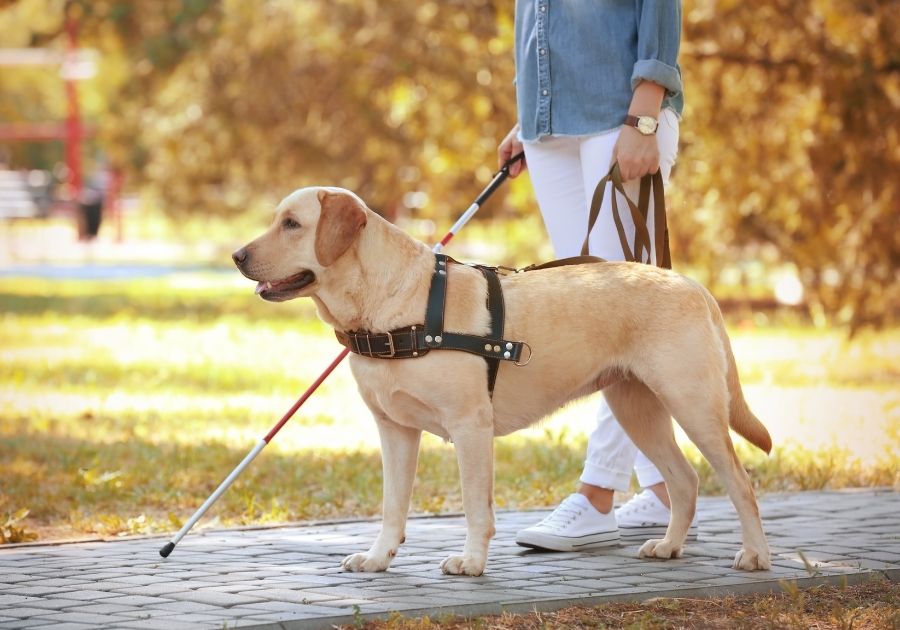
Breed Information
- AKC Group: Sporting Group
- Height: 21 to 24 inches
- Weight: 55 to 80 pounds
- Temperament: Intelligent, agile, kind
- Life expectancy: 10 to 12 years
- Origin: Canada
- Good for Novice Owners: Yes
America’s top dog breed, the Labrador Retriever, is also velcro? You might not think so until your Lab tries to climb on your laps.
It doesn’t seem to know it is too big to be a lapdog. The Labrador loves people, including strangers and kids. It is also willing to please, a plus during training.
It loves to exercise and is the best fit for an active owner with a large living space.
Keeping the Labrador Retriever in an apartment is not advisable because of its size and energy. It loves to swim and can go for jogs.
15. Maltese
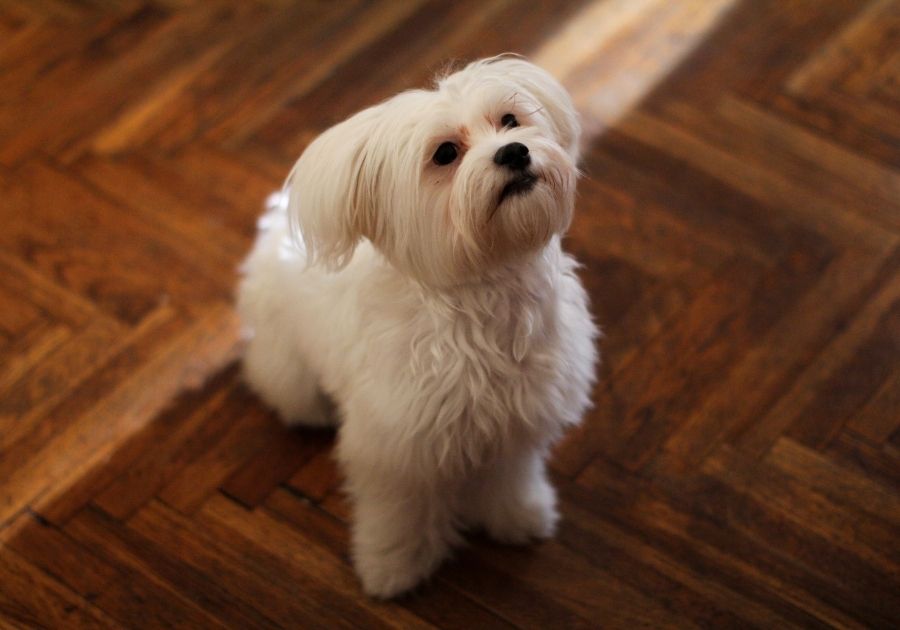
Breed Information
- AKC Group: Toy Group
- Height: 8 to 10 inches
- Weight: 2 to 7 pounds
- Temperament: Playful, intelligent, easygoing
- Life expectancy: 12 to 15 years
- Origin: Malta
- Good for Novice Owners: Yes
The Maltese is another popular toy dog like the Yorkshire Terrier, and the reason for this is more than its hypoallergenic coat (though that’s a big part).
Aside from being small hypoallergenic dogs, it is hard not to love the Maltese, and it will reciprocate your love, sometimes in greater measures.
Maltese is the right definition of a lapdog, and your laps are where it loves to be. It has been a companion since old times, and it continues to be at the side of its owners.
This loyalty to family doesn’t stop it from being friendly with everyone else. The Maltese isn’t one of those wary velcro dog breeds.
16. Pug
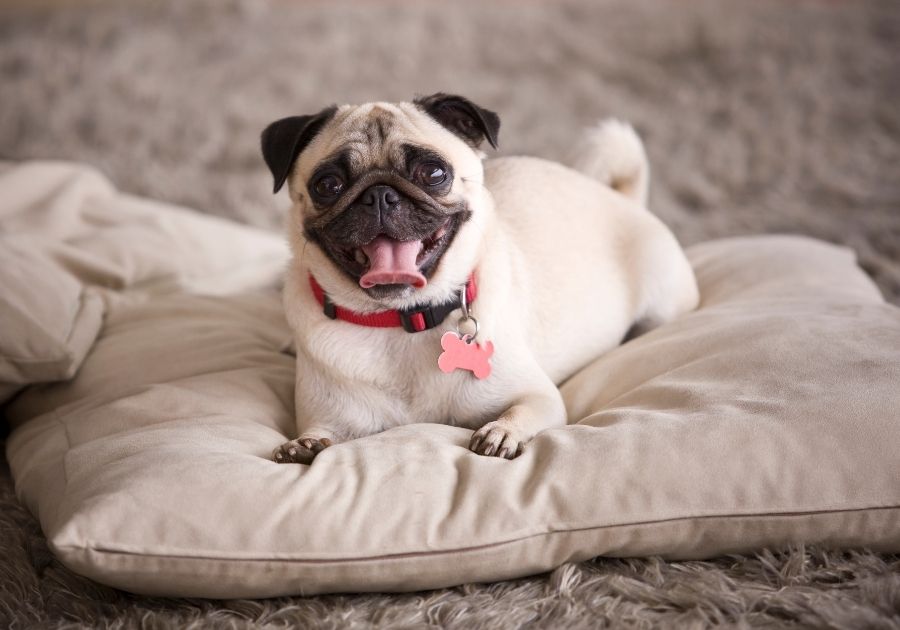
Breed Information
- AKC Group: Toy Group
- Height: 10 to 14 inches
- Weight: 14 to 18 pounds
- Temperament: Charming, stubborn, clever
- Life expectancy: 12 to 15 years
- Origin: China
- Good for Novice Owners: Yes
Pugs were bred in China to be companions of royals, and so throughout history, they lived a pampered life. Some of them even had their bodyguards.
As such, this breed is used to being lavished with attention and might misbehave if ignored. It wants nothing more than to be and play with family.
It does enjoy playing a lot. Though dignified and elegant, the Pug is also funny and clownish.
It is highly energetic to the point of restlessness, though, so you’re more likely to find it perched on your laps or beside you.
17. Golden Retriever
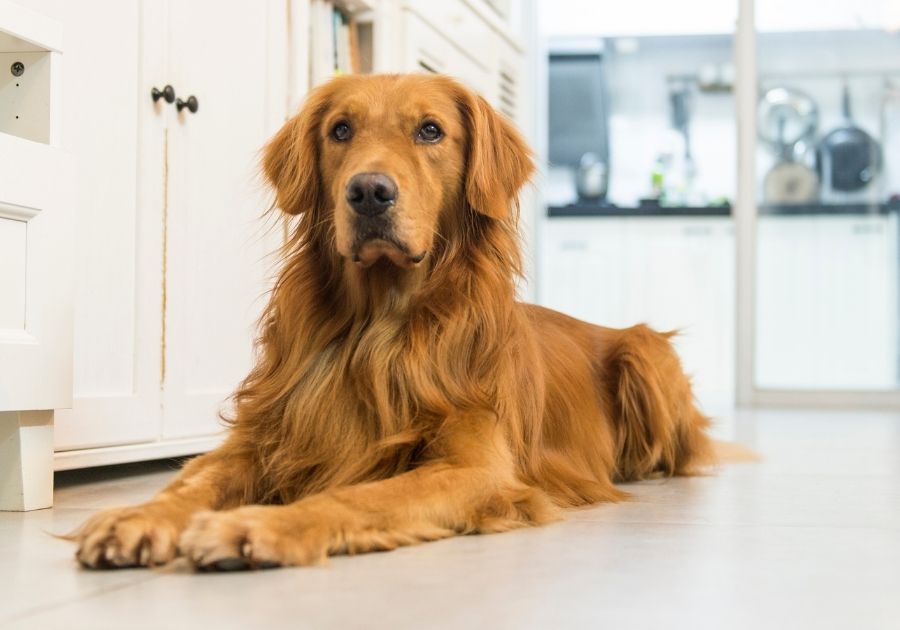
Breed Information
- AKC Group: Sporting Group
- Height: 21 to 24 inches
- Weight: 55 to 75 pounds
- Temperament: Intelligent, friendly, reliable
- Life expectancy: 10 to 12 years
- Origin: Scotland
- Good for Novice Owners: Yes
The Golden Retriever is a breed with the heart of gold and a very popular one at that.
It started as a retriever much like the Labrador but is now a solid companion. Golden Retrievers enjoy human company and are also easy on the eyes.
Both new and experienced pet parents can handle a Golden Retriever as it is eager to please and very intelligent.
It shouldn’t give you a hard time during training, especially if you use the right motivations. It also loves exercise but is calmer than the Labrador.
18. Italian Greyhound
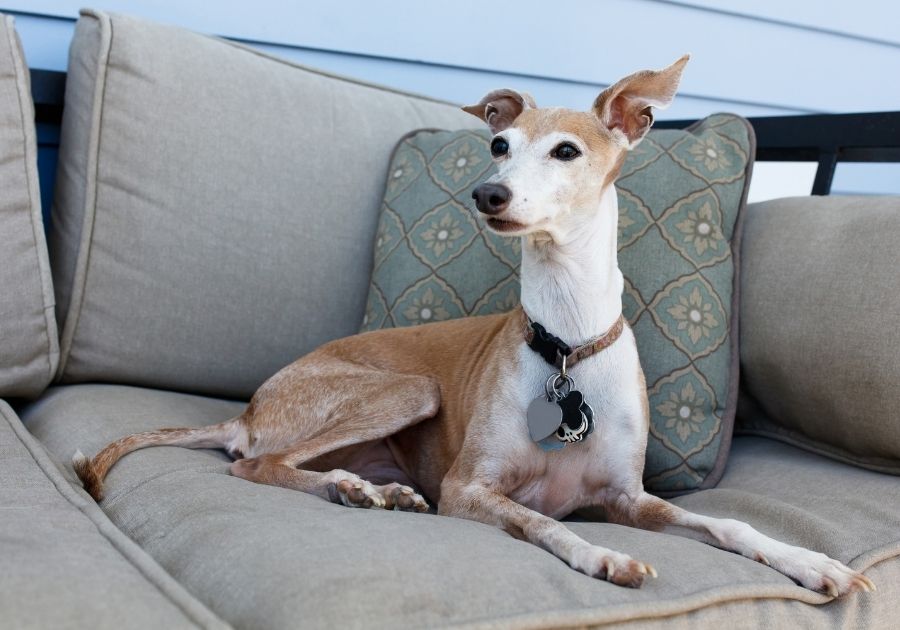
Breed Information
- AKC Group: Toy Group
- Height: 13 to 15 inches
- Weight: 6 to 15 pounds
- Temperament: Smart, sensitive, playful
- Life expectancy: 14 to 15 years
- Origin: Italy
- Good for Novice Owners: Yes
Like the Whippet, the Italian Greyhound is considered a small version of the Greyhound.
However, it is a breed of its own and has existed for a long time. It also shares the velcro behavior with both the Greyhound and the Whippet.
The Italian Greyhound is loyal and devoted to its family but wary of strangers.
Combine the wariness with its loud barking ability and you’d get a good watchdog from this breed. It is also gentle, affectionate, and loving.
19. German Shepherd
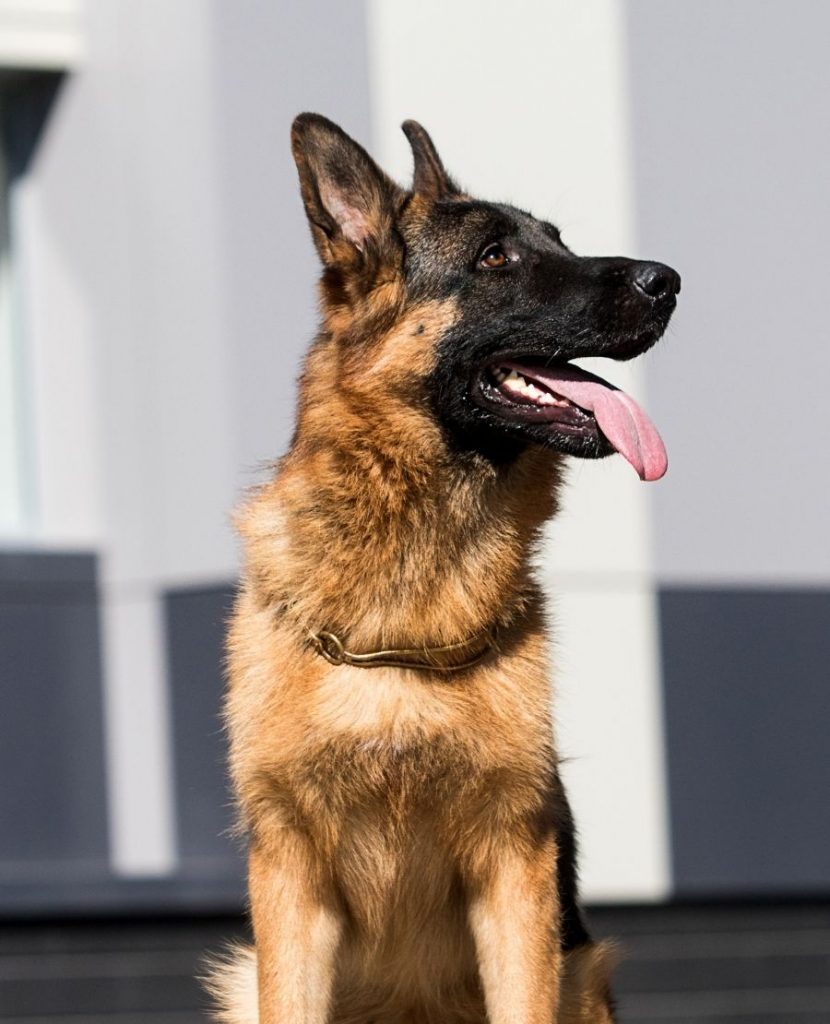
Breed Information
- AKC Group: Herding Group
- Height: 22 to 26 inches
- Weight: 75 to 95 pounds
- Temperament: Intelligence, stubborn, alert
- Life expectancy: 10 to 14 years
- Origin: Germany
- Good for Novice Owners: No
Also known as Alsatian Dog, the German Shepherd is the ultimate k9 police dog, and a very good guard dog as well.
Because it wasn’t initially bred to be a companion, many people might not know the German Shepherd is a velcro dog.
But if there’s a reason German Shepherds often serve in the police force, it is because of their undying loyalty. This breed is a ride-or-die companion.
Because of their loyalty and protectiveness, German Shepherds are wary of strangers. You need to socialize them to not turn that wariness into aggression.
The good news is that the German Shepherd is easy to train, but may not be the best for new pet parents.
This breed sometimes plays favorites, so it might stick to only one person in the family.
20. Chihuahua
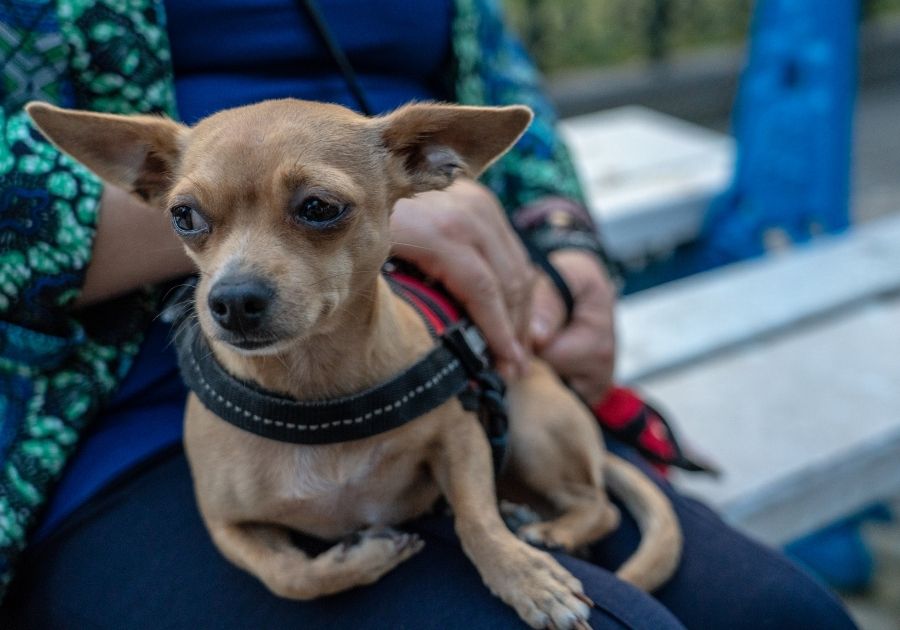
Breed Information
- AKC Group: Toy Group
- Height: 6 to 9 inches
- Weight: 3 to 6 pounds
- Temperament: Devoted, aggressive, fearless
- Life expectancy: 10 to 18 years
- Origin: Mexico
- Good for Novice Owners: Yes
The Chihuahua is well known, very small, spunky, and super clingy. If that sounds like the Yorkshire Terrier, well, they do behave the same way.
Chihuahuas play favorites too and would often attach to one member of the family, not at the expense of others though. Its size is an advantage as you can bring it anywhere.
The Chihuahua behaves like a big dog, so if you plan on owning one you have to teach it some boundaries. Left to its whims, this breed can challenge a bigger dog.
It is suitable for an apartment but should be trained not to bark excessively.
This breed should also not be left alone for long, or your neighbors will pay you an unfriendly visit soon.
Are Velcro Dogs Good?
For some pet parents, a clingy dog breed is exactly what they need. There are some advantages to owning one, many of which we will list soon.
Velcro dogs are not for everyone, but here are some benefits of owning one:
- They help ease anxiety: You don’t need a therapy dog when you have a velcro dog. A lot of them are attuned to their owners’ emotions and will try to make you feel better. They also help with other mental setbacks like depression.
- With a clingy dog, you’ll never feel alone: Empty nesters, stay-at-home parents, and seniors will appreciate having a constant companion around them. Loneliness can’t be a problem with a velcro dog.
- They contribute to your overall well-being: They are also known to make you feel happy because they love to please their owners.
- They encourage you to go outside: Even if it’s a few minutes walk, you can also make new friends because being with a dog attracts attention. “What dog breed is that?” is a good conversation starter.
- Having a clingy dog also decrease blood pressure and even cholesterol levels.
Disadvantages Of Clingy Dogs
As we mentioned, clingy dog breeds are not for everyone. Some pet parents won’t appreciate a dog following them around all the time.
Even those that do should also be careful as having a velcro breed comes with its downsides. Here are some reasons:
- They are highly prone to separation anxiety. If you have a busy career or lifestyle, getting a clingy pup may not be the best option.
- They pose injury risks for themselves and you. You might trip over your dog or accidentally injure it.
- Some are wary of strangers, others are too enthusiastic about people and may throw themselves on an unsuspecting visitor.
- Velcro behavior in dogs can also be a sign of illness or injury, especially if your dog shows other signs of weakness.
How To Deal With The Velcro In Dogs

If you notice your dog is super clingy, there’s little you can do to completely change this clingy behavior. However, you can stop it from going overboard.
The only way to do this is through training. Many pet parents teach their velcro pups the “Stay” and/or “Sit” command so they won’t follow.
You should also reduce the level of positive reinforcements you give the dog. Don’t be harsh, but don’t spoil it either.
Consider your lifestyle before getting a clingy dog. If you have a busy 9 to 5 and not enough money to hire a sitter, perhaps you should look for a more independent breed.
If your adopted dog has a history of abuse or abandonment and is clingy out of fear, seek professional counsel from a trainer or even a veterinarian.
FAQs
Is it OK to have a velcro dog?
There’s nothing wrong with a dog being clingy unless it’s tied to abuse or a medical issue. Some people prefer owning a clingy dog for many reasons.
If that’s you, then go for it. You will enjoy the love and affection a dog that is velcro brings.
What makes a dog velcro?
There are many reasons a dog can become clingy. Some breeds are predisposed to it, especially those that were bred to be companions.
Spoilt breeds can also become clingy because they enjoy the attention.
Fear is another reason for the velcro syndrome in dogs, and this fear is brought about by many factors like changes in the environment or ownership.
How do I take care of a Velcro dog?
Velcro dogs are mostly easy to take care of once you’ve okay with having a shadow. They have similar needs to any other dog and will thrive with human companionship.
They’re best kept in a home with at least one family member who’s always around to give them the attention they can’t get enough of.
Final Thoughts
Owning a clingy dog as a busy person is challenging and not always advisable, even if you can afford the services of a pet sitter.
The latter can help with separation anxiety, but many velcro pups are only comfortable around their owners, not a stranger.
Velcro dog breeds come in different sizes, have different origins, and were bred for various roles.
Their only common denominator is high loyalty and clinginess. The clingiest dogs need understanding, loving and available owners to meet their needs for attention.

